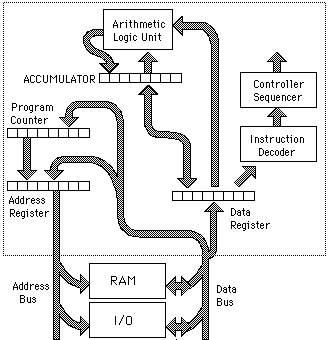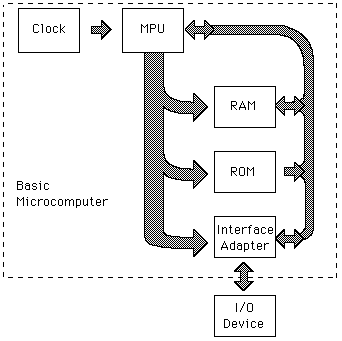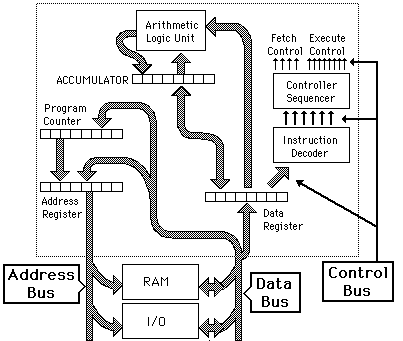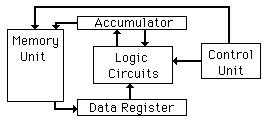The Microprocessor
The term microprocessor typically refers to the central processing unit (CPU) of a microcomputer, containing the arithmetic logic unit (ALU) and the control units. It is typically implemented on a single LSI chip. This separates the "brains" of the operation from the other units of the computer.
An example of microprocessor architecture.The microprocessor contains the arithmetic logic unit (ALU) and the control unit for a microcomputer. It is connected to memory and I/O by buses which carry information between the units. |
 |
Electronics concepts
Digital circuits
Sequential Operations
| HyperPhysics*****Electricity and magnetism | R Nave |


